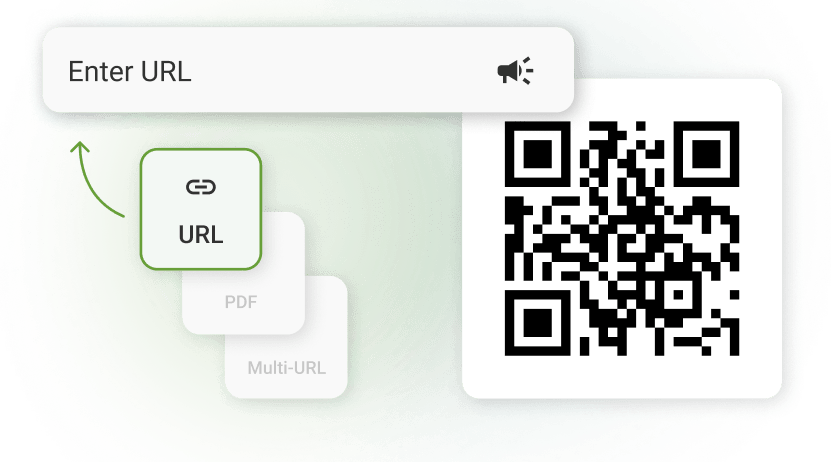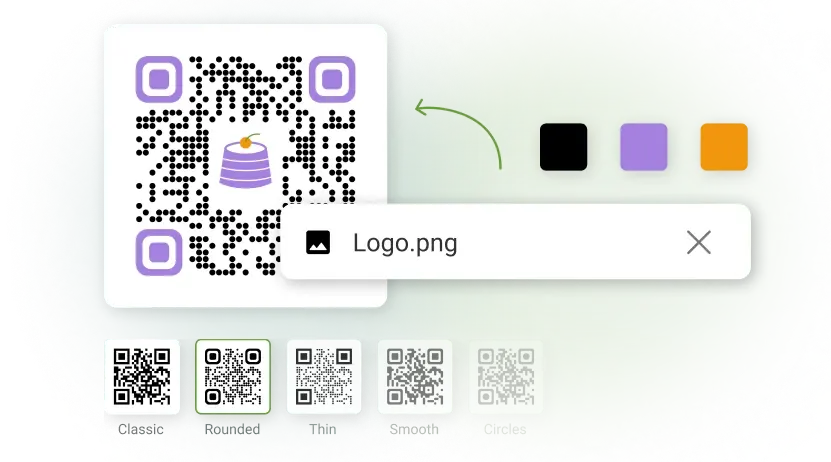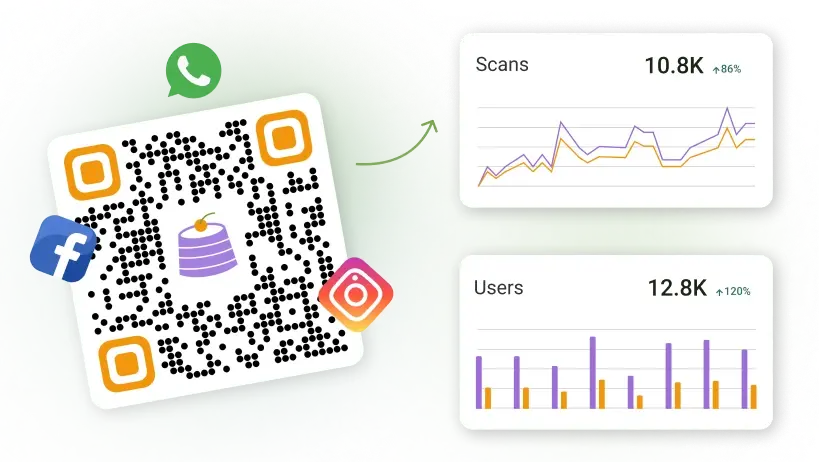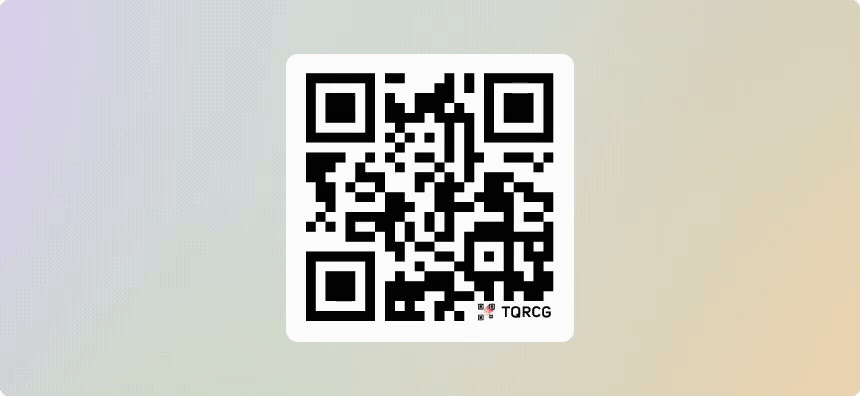Think of a bright red can, icy cold in your hand, no label needed. If you thought Coca-Cola, then you already know the power of color in branding.
Studies show that color can increase brand recognition by up to 80%. It’s often the first thing people notice and the last thing they forget. Color plays a key role in every brand interaction with your audience, including QR Codes.
QR Code usage has surged in the past few years. You see them everywhere: on your favorite soda, at events, on billboards, and even at weddings. According to a recent report, 59% of users scan QR Codes daily.
But here’s what most businesses are missing: color.
Every time someone sees your QR Code, it’s a chance to reinforce your brand. Colored QR Codes let you create a consistent visual experience with your brand colors, building recognition and trust.
This article will be your complete guide to creating colored QR Codes. From designing colored QR Codes keeping your brand in mind to tips to overcoming common pitfalls, we’ll discuss it all. Let’s get started.
What are colored QR Codes and why use them?
Colored QR Codes are the vibrant and visually appealing counterparts to the traditional black-and-white QR Codes.
Today, most modern QR Code generators allow you to change the color, create unique designs, and add logos to your QR Codes to match your brand. But why must you consider using them in your marketing?
Here are a few key reasons:
1. They just look better

A colorful QR Code can make plain marketing material more attractive and eye-catching. It helps you match the tone and style of your campaign while encouraging more people to scan the QR Code.
2. They help you stand out
A colored QR Code helps you stand out in a crowded market. This differentiation is especially valuable at events or in advertisements, where attention is limited. Colorful QR Codes are more likely to catch the eye, and higher visibility often means higher scan rates.
3. They ensure brand consistency

With a customizable QR Code, you can reflect your brand’s color palette across campaigns. This strengthens brand recognition and builds trust with your audience. One great example is McDonald’s #reQRuitement campaign, where they turned QR Codes into fun shapes resembling their iconic fries and burgers. This campaign increased brand recall and made it easy for job seekers to apply for roles at McDonald’s.
Now that we know how colored QR Codes can help, let’s break down what you need to consider when creating colored QR Codes.
What really matters when designing a colored QR Code
Choosing color combinations that look good and scan well is important when creating a colored QR Code. Let’s look at some key things to keep in mind.
1. Choosing QR Code colors that scan well

Colors can make or break a QR Code’s functionality. The most important rule is that contrast matters. Why? QR Codes are made up of data patterns that encode your data. The scanners need to be able to differentiate the patterns to process and show your data. The high contrast makes scanning easy.
- Good color choices: Use dark-colored QR Codes on light backgrounds. This high contrast makes scanning quick and easy.
- Bad color choices: Light-on-light or overly complex backgrounds can confuse scanners and frustrate users. This can lead to missed opportunities.

Pro Tip: Use tools like The QR Code Generator (TQRCG) to check the scannability of your color QR Codes and adjust your colors before using them.
2. Choosing the right QR Code color
Opt for colors that reflect your brand while providing enough contrast for scanning. Consider your brand’s primary colors and select the darkest shade available. For example, if your brand uses blue, choose navy blue over light blue for the QR Code. This maintains brand consistency while ensuring functionality. Test different shades of your brand colors to find the perfect balance between visual appeal and scanning reliability.
3. Picking a background color for your QR Code
The background must complement the QR Code’s color without overpowering it. The key here is balance. Choose backgrounds at least 70% lighter than your QR Code color. Avoid busy patterns, gradients, or images directly behind the QR Code. These can interfere with the scanner’s ability to detect the code’s edges and quiet zone.
4. Using inverted colors
Light QR Code on a dark background? This inverted approach can work, but testing it to ensure it still scans reliably is essential. While most modern smartphones can read inverted QR Codes, success rates drop significantly compared to traditional dark-on-light codes. Some older devices and lower-quality scanners may struggle with inverted QR Codes. Always test your design on multiple phones and scanning apps before finalizing.
How to create a colored QR Code
When creating a colored QR Code, it’s important to use a tool that allows for color and logo customizations.
We’ll be using The QR Code Generator (TQRCG) to create a colored QR Code with three simple steps.
Step 1: Sign up or log in

Log in to TQRCG and choose the type of QR Code you want to create. Enter the URL or content to which you want your QR Code to link to, then select Next.
Step 2: Customize your QR Code

Now it’s time to customize. You can change the color, shape, and size of your QR Code. Use the color picker or enter your brand’s color or hex codes. You can also upload your logo and tweak the style and pattern to match your branding. Once you’re happy with how it looks, select Save.
Step 3: Download and share

Finally, choose the image format and size you like and select Download. Remember to test your colorful QR Code to ensure it scans properly.
Common challenges with colored QR Codes (and how to fix them)
1. Making it pretty vs. making it work
You create your QR Code with gradients, multiple colors, or fancy patterns. Sure, your QR Code looks amazing with all those colors and effects, but then nobody can scan it.
The fix: Keep it simple and functional. Use approved contrast palettes: pair a dark foreground (like black, navy, or deep green) with a light background (such as white, pastel yellow, or beige). This ensures maximum scannability. Avoid light-on-light or dark-on-dark combinations, as they often fail to scan.
Use two colors max–one dark, one light. It’s still colorful and actually works. Think of Snapchat’s QR Code. They use black on their signature yellow background and it scans perfectly while staying on-brand. If you need more customizations you can always add your logo, change shapes or use custom patterns.
2. Building trust with your users
Some people are cautious about scanning colored QR Codes, thinking they might be fake or unsafe. They might associate it with suspicious links.
The fix: Add your logo or a clear message, such as “Scan to view our menu” right next to the code. When people see a recognizable brand, they trust it more. McDonald’s colored QR Codes worked because you instantly recognize the brand’s colors.
3. Making your QR Codes accessible
Not everyone sees color the same way. About 1 in 12 men and 1 in 200 women are color blind. If your QR Code uses red and green, it might be invisible to someone with color vision deficiency.
The fix: Always test with high contrast, not just different colors. A dark red on light gray works for everyone, while red on green doesn’t. Upload your colored QR Codes to online color blindness simulators to check your designs.
4. Making it work in fast-paced environments
When you’re at a busy event, and people are trying to quickly scan your promotional QR Code, colors can make it harder to detect. Another scenario is when your QR Code is part of an outdoor billboard campaign. Scanning from moving vehicles can prove to be hard.
The fix: A well-designed QR Code, even in color, must work within seconds. Test your QR Code in real-world settings such as under sunlight, moving cars, or busy event booths. It is best to stick to proven combinations for time-sensitive campaigns.
5. Tracking and analyzing your QR Codes
You created a beautiful colored QR Code but forgot that they are a goldmine of marketing data. They can play a significant role in tracking user interactions and driving insights.
The fix: Use QR Code generators that provide tracking and analytics, even for colorful QR Codes. You can see which color combinations get more scans, what times of day work best, and adjust your strategy accordingly. With dynamic QR Codes, you can better understand the effectiveness of your marketing campaigns.
6. Making sure changes don’t break your color QR Code
You love how your QR Code looks, so you quickly invert the colors in Photoshop to match a dark poster. Or you make your logo massive because “bigger is better,” right? Wrong.
QR Codes are not just pretty patterns; they’re carefully structured data. You’re scrambling the information when you randomly flip colors or cover too much area with logos. Even though QR Codes have built-in error correction, it’s important to size your logos optimally.
The fix: Always use proper QR Code generators such as TQRCG when creating colored versions. These tools understand how QR Codes work and won’t let you break the data structure. If you need different color variations, create them within the tool itself. Avoid editing them afterward in other software.
For logos, follow the 25% rule. Your logo shouldn’t cover more than a quarter of the QR Code’s total area to ensure it’s scannable.
Color QR Codes can absolutely work, but they need the same thoughtfulness as any other design element.
Examples of brands using colored QR Codes
Let’s look at brands that have used colored QR Codes in innovative ways.
1. La Roche Posay’s UVMune400 QR Code
La Roche-Posay placed bright orange QR Codes on their UVMune 400 sunscreen packaging, leading customers to detailed UV protection information and sustainability initiatives.
Orange is psychologically associated with warmth, energy, and protection–perfect for sunscreen. It’s also highly visible (for outdoor packaging) and creates urgency without being aggressive. In healthcare and skincare, orange suggests approachability, making people more likely to scan for health information.
2. Coca-Cola’s DrinkScanWin QR Code

Coca-Cola created white QR Codes on their iconic red background for their Drink.Scan.Win campaign. It features its bottle silhouette integrated into the design. Red is one of the most powerful branding colors. It evokes excitement, energy, and passion, all core to Coca-Cola’s identity.
The high contrast between red and white ensures the QR Code is easy to scan. Moreover, the familiar color palette reassures customers that the code is authentic and part of the official campaign. By keeping the QR Code on-brand, Coca-Cola turned a simple scan into an engaging and exciting experience.
3. Bumble InstaMatch QR Code
Bumble uses black QR Codes on their signature yellow background for the InstaMatch feature at IRL events, helping users connect safely. Yellow is linked to optimism, friendliness, and warmth, making it ideal for a dating app that wants to foster positive connections.
The black QR Code stands out sharply against the yellow, ensuring it’s scannable even in crowded and dimly lit event settings. The color contrast also subtly communicates safety and trust, which is key to Bumble’s brand positioning.
4. Taco Bell’s app downloads via delivery packaging

Taco Bell’s delivery packaging features a purple bell logo embedded in the QR Code. The QR Code provides a direct link to Taco Bell’s delivery app and stands out visually on the packaging.
Even if you order via Uber Eats or other delivery services, Taco Bell nudges you toward their own app for deals and direct orders. This way, Taco Bell smoothly executes cross-channel marketing just with their outer packaging.
5. Clear Channel’s LGBT-QR Codes

In 2022, Clear Channel created vibrant colored QR Codes featuring Elton John’s face for LGBTQ+ donation campaigns. They partnered with Elton John’s AIDS Foundation and Ogilvy to raise funds. These LGBT-QR Codes were featured across the UK during Pride Month, along the Pride March route.
The billboard’s background was in different shades of the rainbow. This creative approach turned QR Codes into symbols of support and action, encouraging donations in a way that felt both bold and authentic.
Let your colored QR Code do the talking
Colored QR Codes can represent your brand, grab attention, and still do their job perfectly. They are a smart way to get more from your marketing efforts.
If you balance looking good and working well, colored QR Codes can boost brand recognition, attract more people to scan them, and create experiences people actually remember.
Frequently asked questions
Yes, you absolutely can! Most QR Code generators today let you change the color of your QR Code to match your brand or design. Just make sure there’s enough contrast between the QR Code and the background so it scans easily.
Yes, QR Codes are color sensitive. They rely on clear contrast to be scannable. Scanners might struggle to read if you use light colors on a light background (such as yellow on white). Stick to high-contrast combinations for best results. Tools such as The QR Code Generator alert you to adjust colors for scannability while creating QR Codes.
Black and white QR Codes offer the highest contrast, which makes them super reliable for scanning. But thanks to better technology, you can definitely get creative with colored QR Codes as long as you keep the contrast strong.
They can! Colored QR Codes work just as reliably. Pick the right color combo and ensure it is tested across different devices before going live.
You can color almost all parts of a QR Code. You can change the color of the small squares (called modules), the background, or both. Just maintain a high contrast between the position markers (those three big squares) and the quiet zone (empty space around the code).
Colored QR Codes can help your brand stand out, attract more attention, and look more visually appealing. They are great for packaging, marketing campaigns, and events, combining function and design.
Incorrect color combinations can make QR Codes hard to scan, and overly complex designs might confuse users. Always test your QR Code before using it publicly to avoid these issues.










 No credit card required
No credit card required
